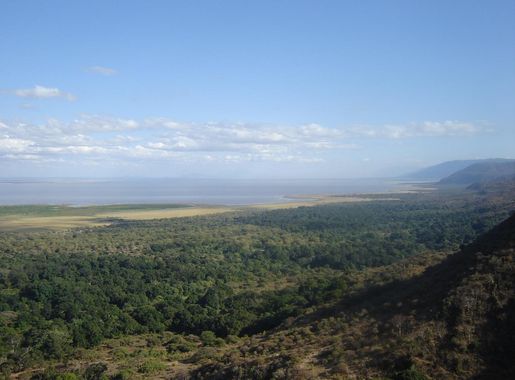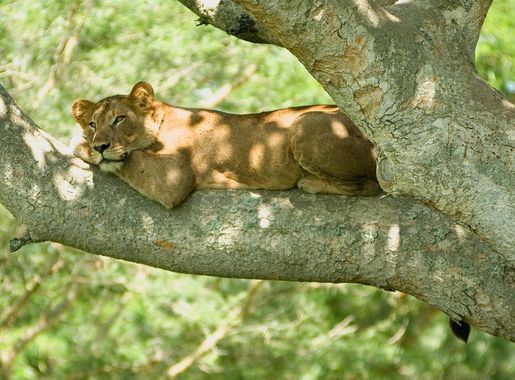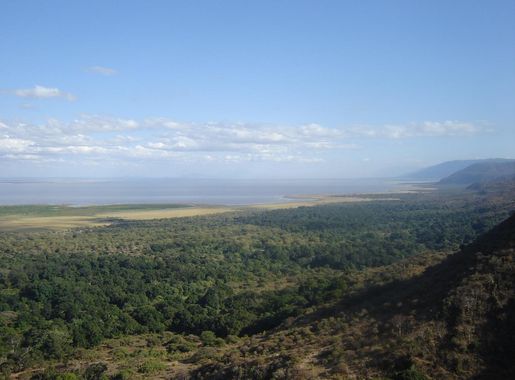
The Serenity of Lake Manyara National Park
Discover the enchanting wildlife and stunning landscapes of Lake Manyara National Park, home to diverse habitats and rare tree-climbing lions in Tanzania's Great Rift Valley.
Nestled in the Great Rift Valley, Lake Manyara National Park in Tanzania is a hidden gem offering lush landscapes and a diverse array of wildlife. This park is a paradise for bird watchers with over 400 bird species, including the bright pink flamingos that grace the lake’s shores. The park also boasts large herds of elephants, making it a prime destination for those hoping to see these majestic creatures up close. Lake Manyara National Park is also famous for its tree-climbing lions, a rare phenomenon that adds an element of the extraordinary to your safari experience. The park's diverse habitats include groundwater forests, acacia woodlands, and the algae-rich lake itself, providing a variety of environments to explore. Whether you're driving through the park or opting for a guided walking safari, the breathtaking scenery and abundant wildlife make every moment memorable. Beyond the wildlife, the park's natural beauty is complemented by hot springs, waterfalls, and panoramic views from the escarpment. Visitors can also engage with local communities and learn about the Maasai culture, adding a rich cultural dimension to their visit. With its unique combination of wildlife and stunning landscapes, Lake Manyara National Park offers a truly unforgettable adventure.
Local tips in Lake Manyara National Park
- Visit during the dry season (June to October) for the best wildlife viewing.
- Bring binoculars for bird watching, as the park is home to over 400 bird species.
- Don't miss the chance to spot the park’s famous tree-climbing lions.
- Consider a guided walking safari for a more intimate experience with the park’s flora and fauna.
- Interact with local Maasai communities to learn about their culture and traditions.
The Serenity of Lake Manyara National Park
Nestled in the Great Rift Valley, Lake Manyara National Park in Tanzania is a hidden gem offering lush landscapes and a diverse array of wildlife. This park is a paradise for bird watchers with over 400 bird species, including the bright pink flamingos that grace the lake’s shores. The park also boasts large herds of elephants, making it a prime destination for those hoping to see these majestic creatures up close. Lake Manyara National Park is also famous for its tree-climbing lions, a rare phenomenon that adds an element of the extraordinary to your safari experience. The park's diverse habitats include groundwater forests, acacia woodlands, and the algae-rich lake itself, providing a variety of environments to explore. Whether you're driving through the park or opting for a guided walking safari, the breathtaking scenery and abundant wildlife make every moment memorable. Beyond the wildlife, the park's natural beauty is complemented by hot springs, waterfalls, and panoramic views from the escarpment. Visitors can also engage with local communities and learn about the Maasai culture, adding a rich cultural dimension to their visit. With its unique combination of wildlife and stunning landscapes, Lake Manyara National Park offers a truly unforgettable adventure.
When is the best time to go to Lake Manyara National Park?
Iconic landmarks you can’t miss
Tarangire National Park
Explore Tarangire National Park, a captivating blend of wildlife, stunning landscapes, and rich biodiversity in Tanzania's great outdoors.
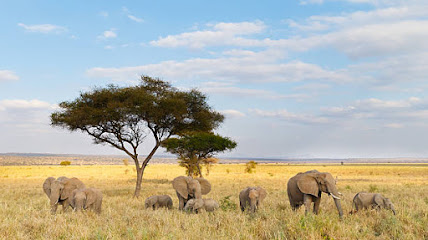
Lake Manyara Serena Safari Lodge
Discover luxury and adventure at Lake Manyara Serena Safari Lodge, a stunning escape in Northern Tanzania with breathtaking views and wildlife experiences.
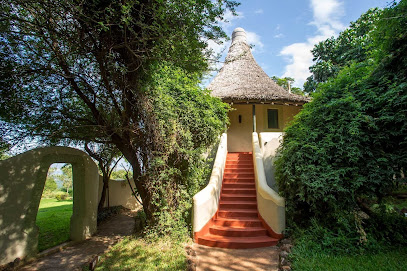
Maramboi Tented Lodge
Experience the magic of Tanzania at Maramboi Tented Lodge, where luxury meets adventure in the heart of nature.

Foresight Eco-Lodge & Safari
Discover serenity and adventure at Foresight Eco-Lodge & Safari, your gateway to Tanzania's breathtaking landscapes and wildlife.
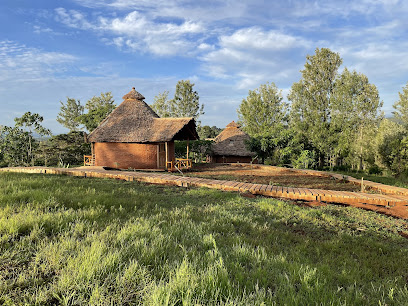
Lake Manyara Kilimamoja Lodge
Experience the luxury of nature at Lake Manyara Kilimamoja Lodge, your gateway to Tanzania's breathtaking landscapes and wildlife.
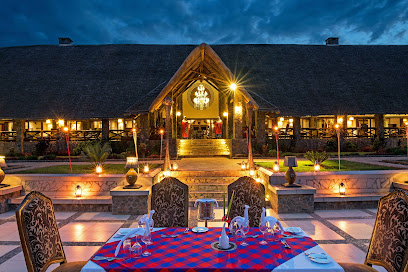
Africa Safari Lake Manyara
Discover the captivating beauty and wildlife of Tanzania at Africa Safari Lake Manyara, your serene retreat in the heart of nature.

Manyara's Secret
Experience luxury and nature at Manyara's Secret, a serene hotel in Mto Wa Mbu offering the perfect gateway to Tanzania's breathtaking landscapes.
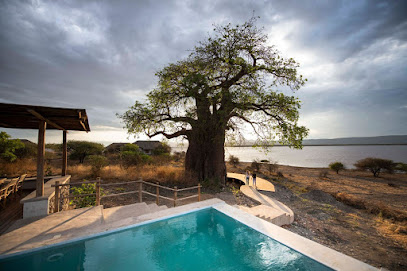
Lake Manyara Treetop Walkway
Discover the breathtaking views and unique wildlife of Lake Manyara National Park from the stunning Treetop Walkway, an unforgettable adventure in Tanzania.
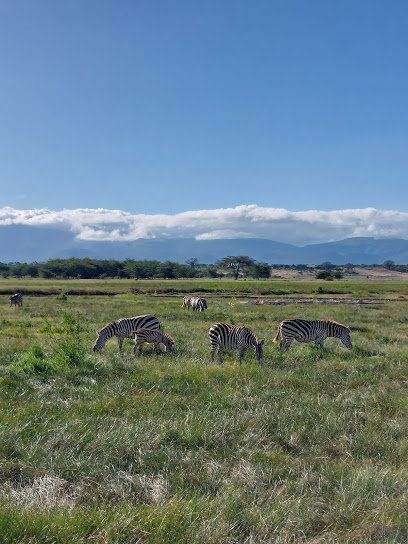
Escarpment Luxury Lodge
Discover the beauty of Tanzania at Escarpment Luxury Lodge, where luxury meets adventure with stunning views of Lake Manyara.

Manyara Lakeview Oasis
Experience the serene beauty of Manyara Lakeview Oasis, a tranquil hotel in Mto wa Mbu, Tanzania, overlooking the stunning Lake Manyara.

LAKE MANYARA WILDLIFE LODGE
Experience the beauty of Tanzania at Lake Manyara Wildlife Lodge, where comfort meets breathtaking nature and wildlife adventures await.

The Tanzanite Experience - Manyara Kibaoni
Explore the unique beauty of tanzanite at The Tanzanite Experience, where art, coffee, and culture beautifully intertwine in Manyara Kibaoni.
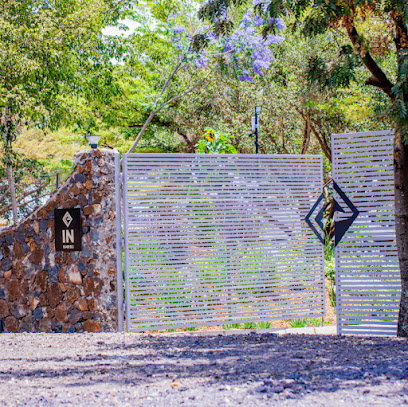
Fig Tree Lodge and Camp
Discover the perfect blend of comfort and adventure at Fig Tree Lodge and Camp in Mto Wa Mbu, Tanzania, your gateway to stunning landscapes and rich culture.

Kirurumu Manyara Lodge
Experience the breathtaking views and wildlife wonders at Kirurumu Manyara Lodge, a perfect blend of luxury and nature in Tanzania.

Lake Manyara
Explore the enchanting beauty of Lake Manyara, a vibrant ecosystem teeming with wildlife and stunning landscapes in Tanzania's Great Rift Valley.
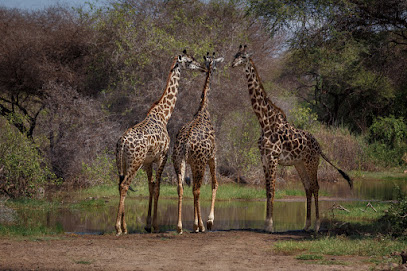
Unmissable attractions to see
Entrance Gate Tarangire National Park
Explore Tarangire National Park, a wildlife paradise in Tanzania, renowned for its stunning landscapes and rich biodiversity, perfect for every adventure seeker.
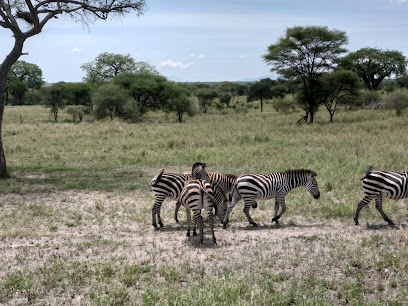
Twiga Campsite & Lodge
Discover the enchanting beauty of Twiga Campsite & Lodge in Tanzania, where nature meets comfort for an unforgettable getaway.

Lake Manyara Viewpoint
Discover the stunning beauty of Lake Manyara Viewpoint, a premier destination in Tanzania showcasing breathtaking landscapes and diverse wildlife.
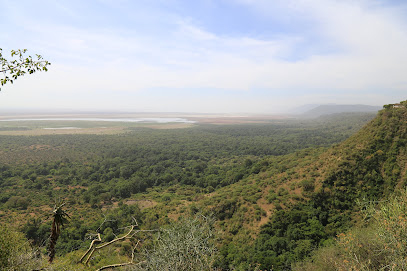
The Tanzanite Experience - Manyara Kibaoni
Explore the enchanting world of tanzanite at The Tanzanite Experience in Manyara Kibaoni, where culture and nature intersect beautifully.
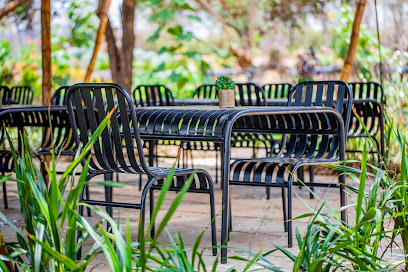
Rice fields view point
Explore the stunning Rice Fields View Point in Mto Wa Mbu, where lush landscapes and local culture blend seamlessly into a breathtaking experience.
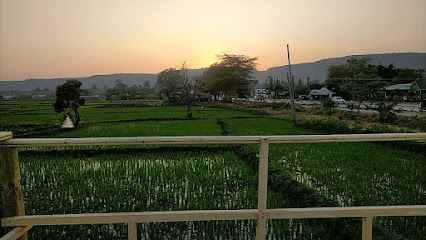
Mto Wa Mbu River
Explore the stunning trails and vibrant biodiversity at Mto Wa Mbu River, a hidden hiking gem in Tanzania that promises unforgettable adventures and cultural encounters.
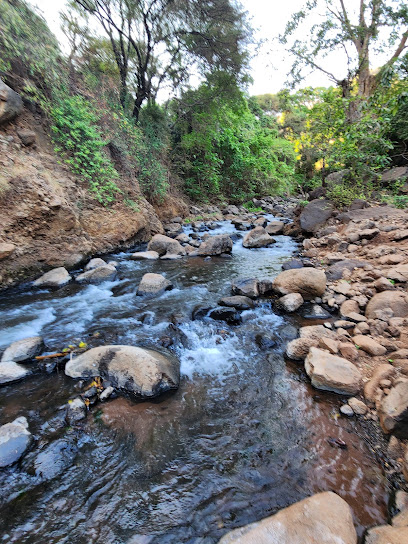
Lakeside Manyara
Experience the beauty of Lakeside Manyara, where nature meets tranquility in a stunning Tanzanian paradise.
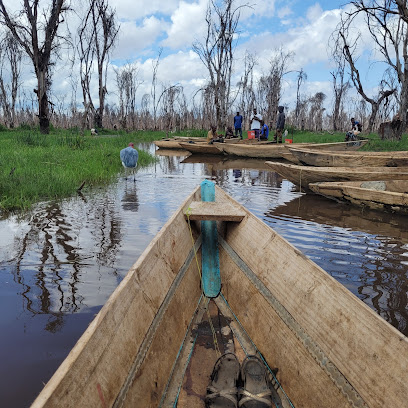
Elephant Caves
Explore the enchanting Elephant Caves in Karatu, Tanzania, where stunning rock formations meet unique wildlife in a breathtaking natural setting.
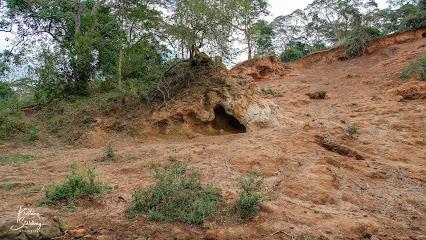
maasai tribe visitors center
Experience the vibrant culture of the Maasai people at the Maasai Tribe Visitors Center, a unique cultural journey in Mto wa Mbu, Tanzania.
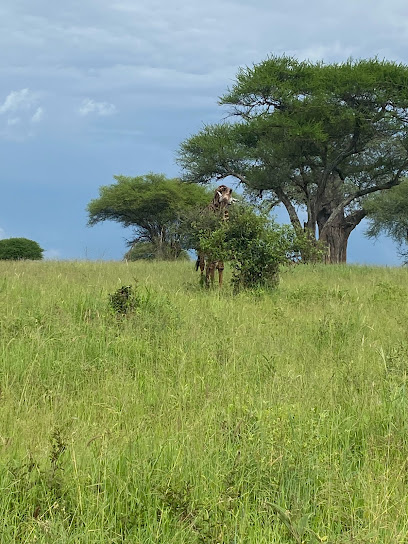
Upper Kitete Wildlife Corridor
Discover the stunning landscapes and diverse wildlife of the Upper Kitete Wildlife Corridor, a must-visit destination for nature lovers in Tanzania.

Mbu Culture Tour & Safari Tour Program
Experience Tanzania's rich culture and breathtaking wildlife with the Mbu Culture Tour & Safari in Mto Wa Mbu, a journey like no other.

CULTURAL HERITAGE LTD
Discover the vibrant cultural heritage of Majengo, a must-visit destination for tourists seeking authentic Tanzanian experiences and local traditions.

Essential places to dine
Lake Manyara National Park
Explore Lake Manyara National Park: A Natural Wonderland in Tanzania Rich with Wildlife and Scenic Beauty.
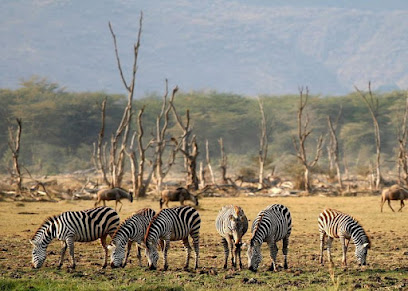
Lake Manyara Serena Safari Lodge
Discover tranquility at Lake Manyara Serena Safari Lodge - a luxurious escape amidst Tanzania's breathtaking wildlife and scenic landscapes.
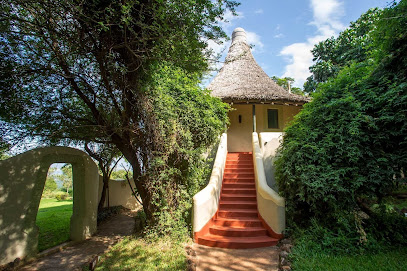
Maramboi Tented Lodge
Discover luxury in nature at Maramboi Tented Lodge, perfectly situated between Tarangire National Park and Lake Manyara.

Foresight Eco-Lodge & Safari
Discover comfort and adventure at Foresight Eco-Lodge & Safari, your gateway to Tanzania's breathtaking landscapes and wildlife experiences.
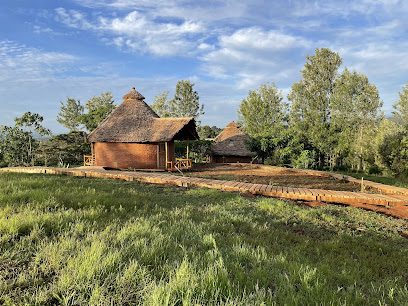
Lake Manyara Kilimamoja Lodge
Experience luxury and nature at Lake Manyara Kilimamoja Lodge - your gateway to adventure in Tanzania's stunning landscapes.
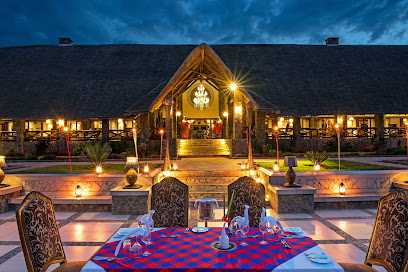
Africa Safari Lake Manyara
Discover comfort and adventure at Africa Safari Lake Manyara – your gateway to Tanzania's stunning wildlife and landscapes.

Manyara Best View Lodge
Discover tranquility and stunning vistas at Manyara Best View Lodge, your gateway to Tanzania's breathtaking landscapes and wildlife adventures.

Lake Manyara Treetop Walkway
Discover breathtaking views and unique wildlife encounters at Lake Manyara's stunning treetop walkway in Tanzania's national park.
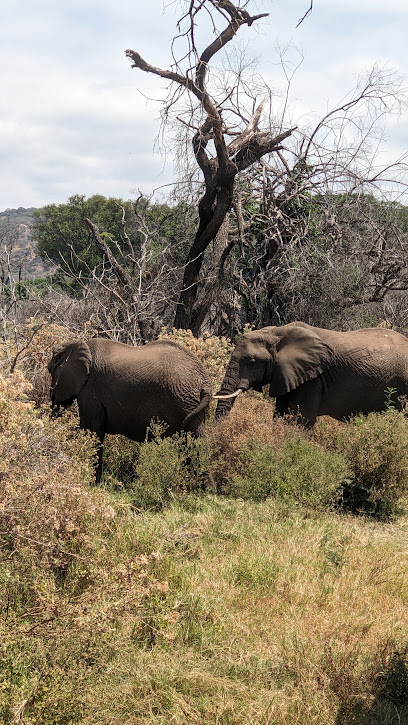
Manyara's Secret
Experience tranquility at Manyara's Secret - your perfect getaway in the heart of Tanzania’s stunning landscapes.
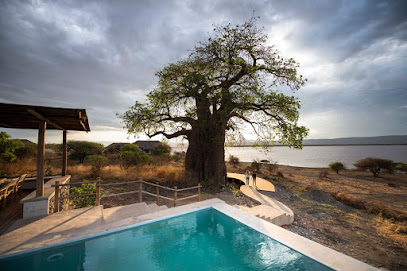
Escarpment Luxury Lodge
Experience luxury and nature harmoniously at Escarpment Luxury Lodge near Lake Manyara National Park.
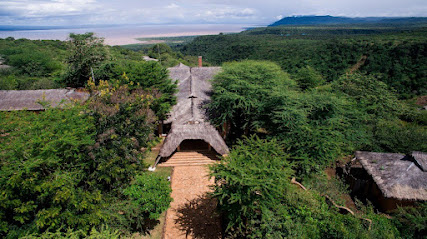
Cafe Kabisa
Discover Cafe Kabisa in Mto Wa Mbu: your go-to destination for exquisite coffee and delightful pastries in a tranquil setting.
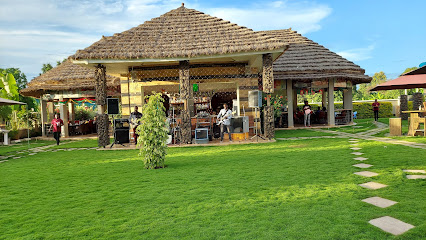
Manyara Lakeview Oasis
Experience tranquility at Manyara Lakeview Oasis, your serene escape near stunning Lake Manyara National Park.

LAKE MANYARA WILDLIFE LODGE
Experience nature's beauty at Lake Manyara Wildlife Lodge – your serene escape amidst Tanzania's stunning landscapes and wildlife.

The Tanzanite Experience - Manyara Kibaoni
Explore the beauty of tanzanite at The Tanzanite Experience - where art meets nature in Manyara Kibaoni.
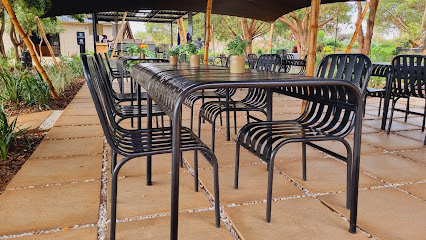
Fig Tree Lodge and Camp
Experience authentic Tanzanian hospitality at Fig Tree Lodge and Camp – your gateway to adventure in Mto Wa Mbu.

Markets, malls and hidden boutiques
Lake Manyara National Park
Explore the stunning landscapes and diverse wildlife of Lake Manyara National Park, a gem in Tanzania's natural heritage.
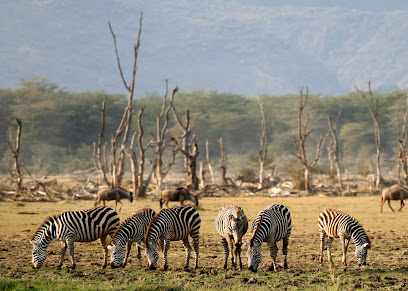
African Galleria
Explore the African Galleria, a vibrant souvenir store in Usangi, showcasing authentic African crafts and cultural treasures for every traveler.
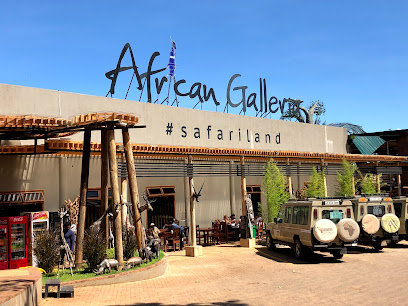
Lake Manyara Serena Safari Lodge
Discover luxury and nature combined at Lake Manyara Serena Safari Lodge, a perfect gateway to Tanzania's breathtaking wildlife and landscapes.
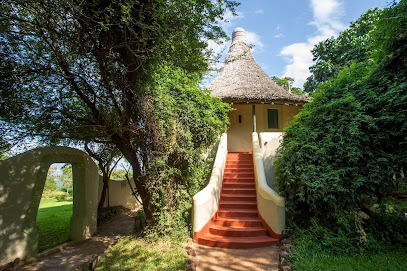
Lake Manyara Kilimamoja Lodge
Discover luxury and nature at Lake Manyara Kilimamoja Lodge, a serene escape in Tanzania's breathtaking landscapes.

Africa Safari Lake Manyara
Discover the beauty of Lake Manyara and immerse yourself in the wildlife at Africa Safari Lake Manyara, a perfect escape for nature lovers and adventure seekers.

Lake Manyara Treetop Walkway
Explore the stunning Lake Manyara Treetop Walkway for breathtaking views and unique wildlife encounters in Tanzania's lush landscapes.
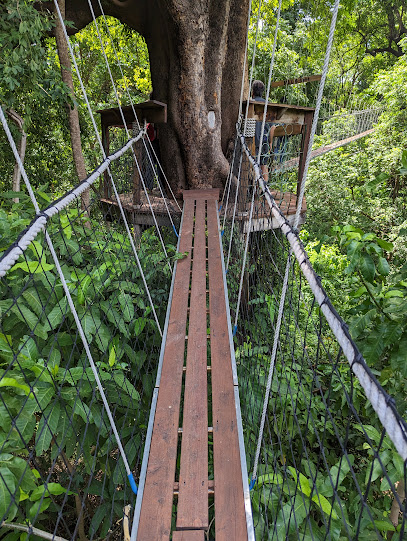
Marera Village Gallery
Discover unique Tanzanian art and crafts at Marera Village Gallery, a treasure trove of local souvenirs along the Karatu-Arusha Road.
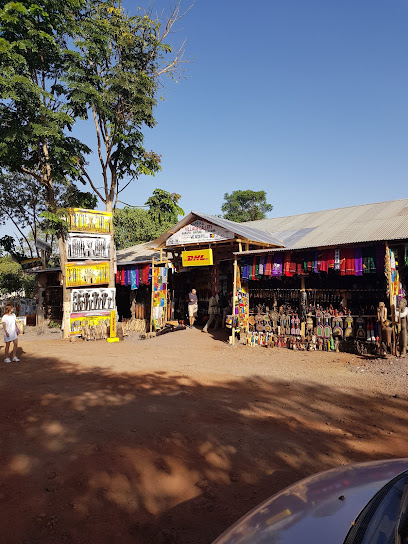
Manyara Lakeview Oasis
Experience the beauty of Lake Manyara at Manyara Lakeview Oasis, a tranquil hotel that offers comfort and adventure in Tanzania’s stunning landscapes.

The Tanzanite Experience - Manyara Kibaoni
Explore the unique blend of jewelry, art, and culture at The Tanzanite Experience in Manyara Kibaoni, Tanzania.

andBeyond Lake Manyara Tree Lodge
andBeyond Lake Manyara Tree Lodge offers a luxurious escape amidst Tanzania's stunning wildlife and natural landscapes for an unforgettable adventure.
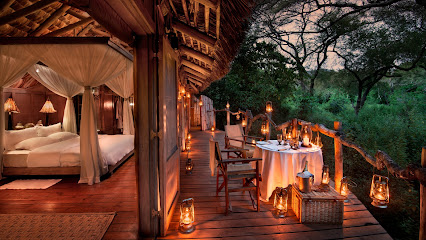
The Tanzanite Experience - Manyara Airport
Explore the enchanting world of tanzanite at The Tanzanite Experience, Manyara Airport - a unique gem shopping destination in Tanzania.
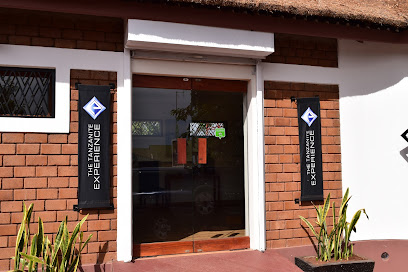
Nanja Marketplace
Discover the vibrant culture and unique shopping experience at Nanja Marketplace in Tanzania.
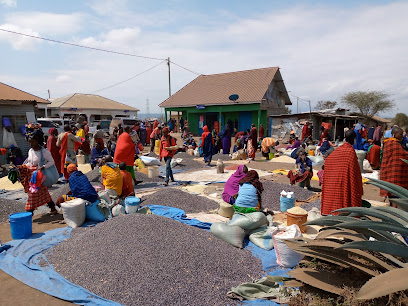
Panone Supermarket
Discover the vibrant local flavors and essential goods at Panone Supermarket in Mto Wa Mbu, your gateway to Tanzanian culinary delights.
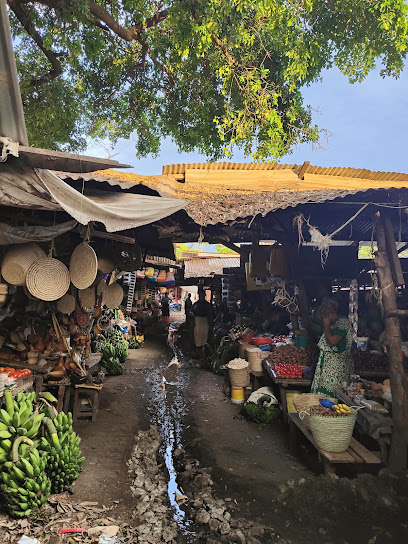
Manyara General Traders
Explore the vibrant flavors of Babati at Manyara General Traders, your go-to grocery store for local produce and traditional snacks.

Madame's Store
Discover local flavors and essentials at Madame's Store, the premier supermarket in Karatu, Tanzania, open daily for all your shopping needs.
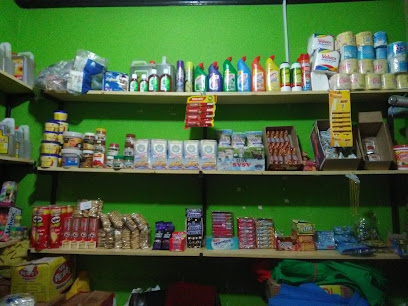
Essential bars & hidden hideouts
Manyara Raha
Discover the vibrant nightlife at Manyara Raha, a premier bar in Babati, Tanzania, offering exquisite drinks and a lively atmosphere for all.
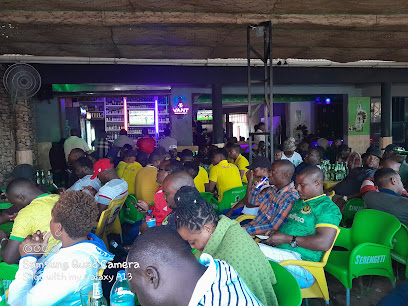
mto Wambu Town
Discover the vibrant nightlife at Mto Wambu Town, a lively bar in Tanzania offering refreshing drinks and a taste of local culture.
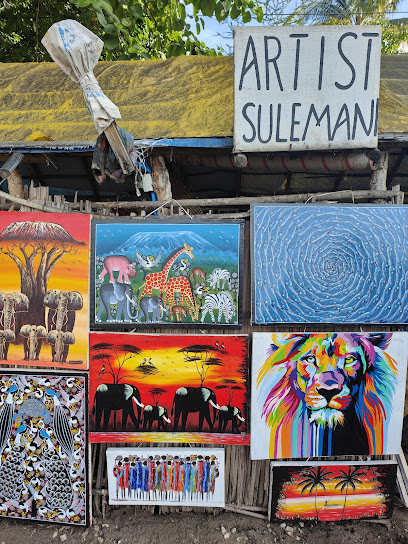
la brina bistro
Experience the vibrant local culture at La Brina Bistro in Mto Wa Mbu, where refreshing drinks and a lively atmosphere await you.

Kigongo Inn
Discover the flavors of Tanzania at Kigongo Inn, a welcoming restaurant near Mto wa Mbu offering diverse and delicious local cuisine.
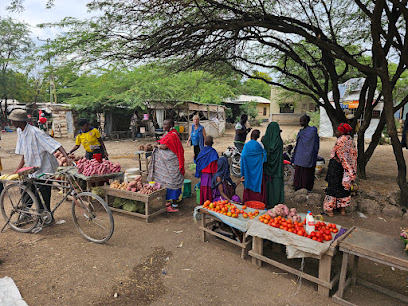
SAFARI PARK
Discover the thrill of wildlife encounters and local culture at Safari Park in Mto Wa Mbu, a must-visit destination for every traveler.
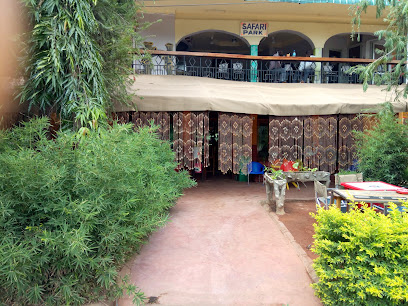
Mnazi Mmoja Pub
Discover the lively ambiance of Mnazi Mmoja Pub in Mto Wa Mbu, where local flavors and vibrant culture unite for an unforgettable experience.
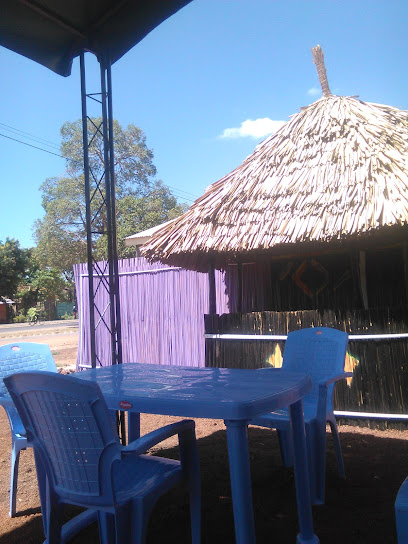
Lake Manyara picnic site
Experience the tranquility of Lake Manyara Picnic Site, a perfect blend of nature and relaxation in Tanzania's stunning landscapes.
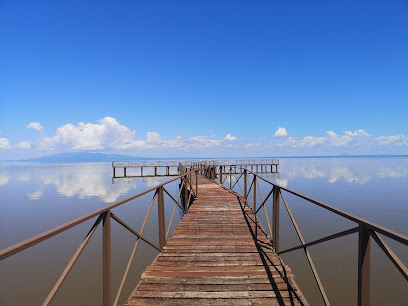
Lilac Oasis
Experience the best of Tanzanian cuisine at Lilac Oasis, where delicious grilled dishes and a warm atmosphere await in Karatu.
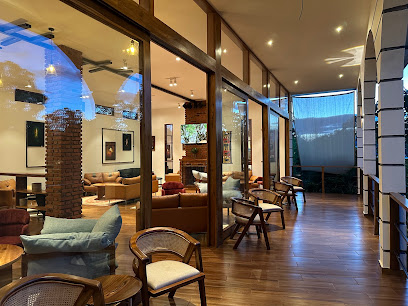
Mero J3 BAR
Discover the vibrant atmosphere of Mero J3 BAR in Makuyuni, where local drinks and Tanzanian hospitality create an unforgettable experience.
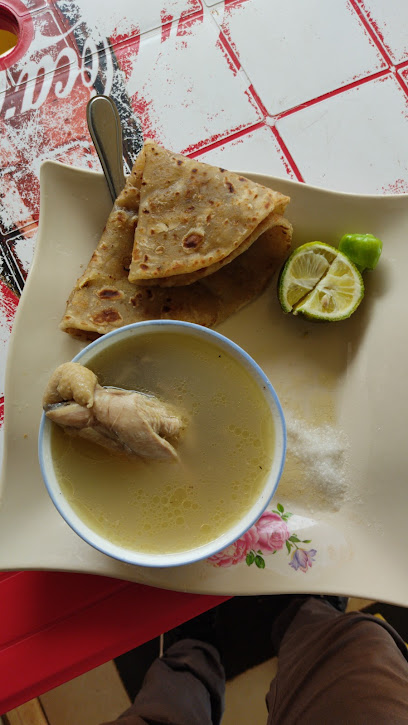
Mountain View
Experience the lively ambiance and local charm at Mountain View Bar in Anslay, where refreshing drinks and great company await.

The Legends Sports Bar And Grill
Experience the vibrant energy of The Legends Sports Bar And Grill in Babati, where great food, refreshing drinks, and live sports unite for an unforgettable evening.
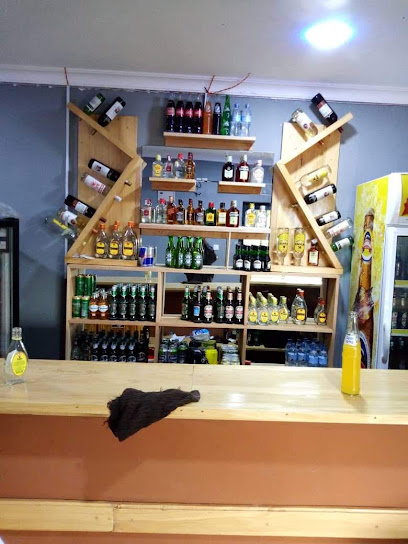
Double M Bar
Discover the vibrant atmosphere of Double M Bar in Mto Wa Mbu, where friendly faces and refreshing drinks await every traveler.
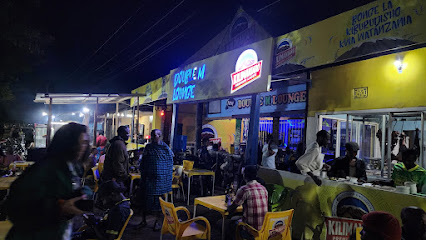
KARATU REST HOUSE
Discover the charm of Karatu at Karatu Rest House, your perfect lounge retreat in Tanzania's breathtaking landscapes.
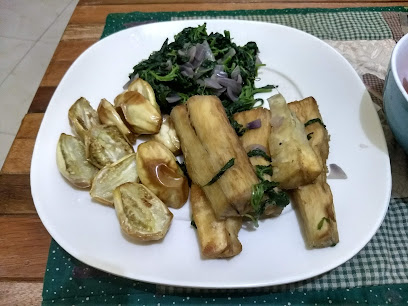
CHINI YA MTI BAR
Experience the charm of Tanzania at Chini Ya Mti Bar in Minjingu, where refreshing drinks meet friendly local vibes in a serene atmosphere.
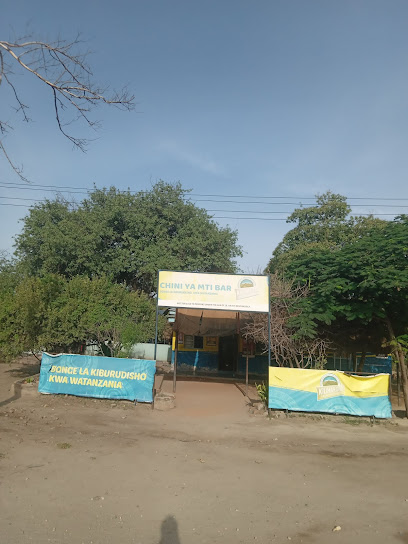
Waah pub
Discover the lively Waah Pub in Karatu, where great drinks, local cuisine, and a vibrant atmosphere await every visitor.

Local Phrases about Lake Manyara National Park
-
- HelloJambo
[jahm-boh] - GoodbyeKwaheri
[kwah-heh-ree] - YesNdio
[nn-dee-oh] - NoHapana
[hah-pah-nah] - Please/You're welcomeTafadhali
[tah-fah-dah-lee] - Thank youAsante
[ah-sahn-teh] - Excuse me/SorrySamahani
[sah-mah-hah-nee] - How are you?U hali gani?
[oo hah-lee gah-nee] - Fine. And you?Nzuri. Na wewe?
[n'-zoo-ree. nah weh-weh] - Do you speak English?Unazungumza Kiingereza?
[oo-nah-zoon-goom-zah kee-in-geh-reh-zah] - I don't understandSielewi
[see-eh-leh-wee]
- HelloJambo
-
- I'd like to see the menu, pleaseNingependa kuona menyu, tafadhali
[nin-geh-pen-dah koo-oh-nah men-yoo, tah-fah-dah-lee] - I don't eat meatSili nyama
[see-lee nyah-mah] - Cheers!Mambo!
[mahm-boh] - I would like to pay, pleaseNingependa kulipa, tafadhali
[nin-geh-pen-dah koo-lee-pah, tah-fah-dah-lee]
- I'd like to see the menu, pleaseNingependa kuona menyu, tafadhali
-
- Help!Msaada!
[msah-ah-dah] - Go away!Nenda zako!
[nen-dah zah-koh] - Call the Police!Piga simu polisi!
[pee-gah see-moo poh-lee-see] - Call a doctor!Piga simu daktari!
[pee-gah see-moo dahk-tah-ree] - I'm lostNimepotea
[nee-meh-poh-teh-ah] - I'm illNinaumwa
[nee-now-mwah]
- Help!Msaada!
-
- I'd like to buy...Ningependa kununua...
[nin-geh-pen-dah koo-noo-noo-ah] - I'm just lookingNatazama tu
[nah-tah-zah-mah too] - How much is it?Bei ni kiasi gani?
[bay nee kee-ah-see gah-nee] - That's too expensiveHilo ni ghali sana
[hee-loh nee gah-lee sah-nah] - Can you lower the price?Unaweza kupunguza bei?
[oo-nah-weh-zah koo-poon-goo-zah bay]
- I'd like to buy...Ningependa kununua...
-
- What time is it?Ni saa ngapi?
[nee sah-ah ngah-pee] - It's one o'clockSaa moja
[sah-ah moh-jah] - Half past (10)Nusu saa (kumi)
[noo-soo sah-ah (koo-mee)] - MorningAsubuhi
[ah-soo-boo-hee] - AfternoonMchana
[mchah-nah] - EveningJioni
[joh-ee-nee] - YesterdayJana
[jah-nah] - TodayLeo
[leh-oh] - TomorrowKesho
[keh-shoh] - 1Moja
[moh-jah] - 2Mbili
[em-bee-lee] - 3Tatu
[tah-too] - 4Nne
[nn-neh] - 5Tano
[tah-noh] - 6Sita
[see-tah] - 7Saba
[sah-bah] - 8Nane
[nah-neh] - 9Tisa
[tee-sah] - 10Kumi
[koo-mee]
- What time is it?Ni saa ngapi?
-
- Where's a/the...?Iko wapi...?
[ee-koh wah-pee] - What's the address?Anwani ni ipi?
[ahn-wah-nee nee ee-pee] - Can you show me (on the map)?Unaweza kunionesha (kwenye ramani)?
[oo-nah-weh-zah koo-nee-oh-neh-shah (kweh-neh rah-mah-nee)] - When's the next (bus)?Basi lijalo litakuja lini?
[bah-see lee-jah-loh lee-tah-koo-jah lee-nee] - A ticket (to ....)Tiketi (kwenda ....)
[tee-keh-tee (kwehn-dah)]
- Where's a/the...?Iko wapi...?
History of Lake Manyara National Park
-
The area surrounding Lake Manyara has been inhabited for thousands of years, with evidence of early human settlements dating back to the Stone Age. The indigenous people, including the Maasai and the Tatoga, have long utilized the land for grazing and agriculture. The Maasai, in particular, are known for their semi-nomadic lifestyle and have a rich cultural heritage that is deeply connected to the natural environment of the region.
-
During the late 19th and early 20th centuries, European explorers and missionaries began to traverse the area around Lake Manyara. German colonialists, who controlled Tanganyika (now Tanzania) during this period, conducted various expeditions and documented the rich biodiversity of the region. This period also saw the establishment of agricultural and hunting activities by European settlers, which had a significant impact on the local environment and communities.
-
Lake Manyara National Park was officially established in 1960, initially covering an area of 325 square kilometers. The park was created to protect the unique ecosystem of the region, which includes the alkaline lake, dense groundwater forests, and open savannahs. The establishment of the park was a significant step in the conservation of Tanzania's natural heritage, aiming to safeguard the habitat for a variety of wildlife, including elephants, lions, and the famed tree-climbing lions.
-
In the decades following its establishment, Lake Manyara National Park underwent several expansions to increase its protected area. Notably, in 1974, the park's boundaries were extended to cover approximately 650 square kilometers. Conservation initiatives have focused on mitigating human-wildlife conflict, promoting sustainable tourism, and conducting research on the park's diverse flora and fauna. Collaborative efforts between the Tanzanian government, international organizations, and local communities have been crucial in preserving the park's ecological integrity.
-
Lake Manyara National Park is not only a haven for wildlife but also a place of cultural significance. The Maasai communities living around the park continue to practice their traditional way of life, coexisting with the natural environment. Cultural tourism has become an important aspect of the park's offerings, allowing visitors to engage with Maasai traditions, crafts, and ceremonies. The park's proximity to the Great Rift Valley and its stunning landscapes make it a popular destination for both nature enthusiasts and cultural explorers.
Lake Manyara National Park Essentials
-
Lake Manyara National Park is located in northern Tanzania, approximately 125 kilometers west of Arusha. The nearest airport is Kilimanjaro International Airport (JRO), which is about a 2-hour drive from Arusha. From Arusha, you can take a taxi or a shuttle bus to the park. There are also domestic flights that operate from Arusha Airport (ARK) to Lake Manyara Airport, which is a short drive from the park entrance.
-
Within the park, the primary mode of transportation is by safari vehicle, often arranged through tour operators. It's advisable to book a guided tour for the best experience. For getting around nearby towns, taxis and shuttle buses are available, but renting a car can offer more flexibility. Be sure to rent a 4x4 vehicle if you plan to drive within the park, as the terrain can be challenging.
-
The official currency is the Tanzanian Shilling (TZS). While some lodges and larger establishments accept credit cards, it's advisable to carry cash for smaller purchases and tips. ATMs are available in nearby towns like Arusha and Mto wa Mbu, but it's a good idea to withdraw sufficient cash before heading to the park. US dollars are also widely accepted, especially for larger transactions.
-
Lake Manyara National Park is generally safe for tourists. However, standard precautions should be taken. Avoid walking alone at night in unfamiliar areas and keep valuables secure. While the park itself is safe, be cautious in nearby towns and avoid areas that are poorly lit or isolated. Always stay within designated areas in the park to avoid encounters with wildlife.
-
In case of emergency, contact your lodge or tour operator immediately. Most lodges have communication equipment to contact local authorities. The emergency number in Tanzania is 112. It is highly recommended to have travel insurance that covers medical emergencies and evacuation. For minor health issues, there are pharmacies in nearby towns, but for serious conditions, you may need to be transported to a hospital in Arusha.
-
Fashion: Do wear light, breathable clothing and comfortable shoes suitable for walking. Avoid bright colors that might attract wildlife. Religion: Do respect local customs and traditions. Dress modestly when visiting local communities. Public Transport: Do use official taxis or shuttle services and agree on a fare beforehand. Don't use unmarked or unofficial taxis. Greetings: Do greet people with a handshake. Learning a few Swahili phrases can go a long way. Eating & Drinking: Do try local dishes and be adventurous with your food choices. Don't drink tap water; always opt for bottled water.
-
To experience Lake Manyara National Park like a local, consider visiting the nearby village of Mto wa Mbu, which offers a cultural tour showcasing local crafts and traditional foods. Engage with park rangers and guides, who can provide in-depth knowledge about the wildlife and ecosystem. Don't miss the opportunity to visit the hot springs and the treetop walkway for a unique perspective of the park.
Trending Landmarks in Lake Manyara National Park
-
Tarangire National Park
-
Lake Manyara Serena Safari Lodge
-
Maramboi Tented Lodge
-
Foresight Eco-Lodge & Safari
-
Lake Manyara Kilimamoja Lodge
-
Africa Safari Lake Manyara
-
Manyara's Secret
-
Lake Manyara Treetop Walkway
-
Escarpment Luxury Lodge
-
Manyara Lakeview Oasis
-
LAKE MANYARA WILDLIFE LODGE
-
The Tanzanite Experience - Manyara Kibaoni
-
Fig Tree Lodge and Camp
-
Kirurumu Manyara Lodge
-
Lake Manyara
Nearby Cities to Lake Manyara National Park
-
Things To Do in Singida
-
Things To Do in Moshi
-
Things To Do in Nairobi
-
Things To Do in Dodoma
-
Things To Do in Naivasha
-
Things To Do in Mwanza
-
Things To Do in Tabora
-
Things To Do in Nakuru
-
Things To Do in Tanga
-
Things To Do in Kisumu
-
Things To Do in Morogoro
-
Things To Do in Diani Beach
-
Things To Do in Mombasa
-
Things To Do in Eldoret
-
Things To Do in Iringa

